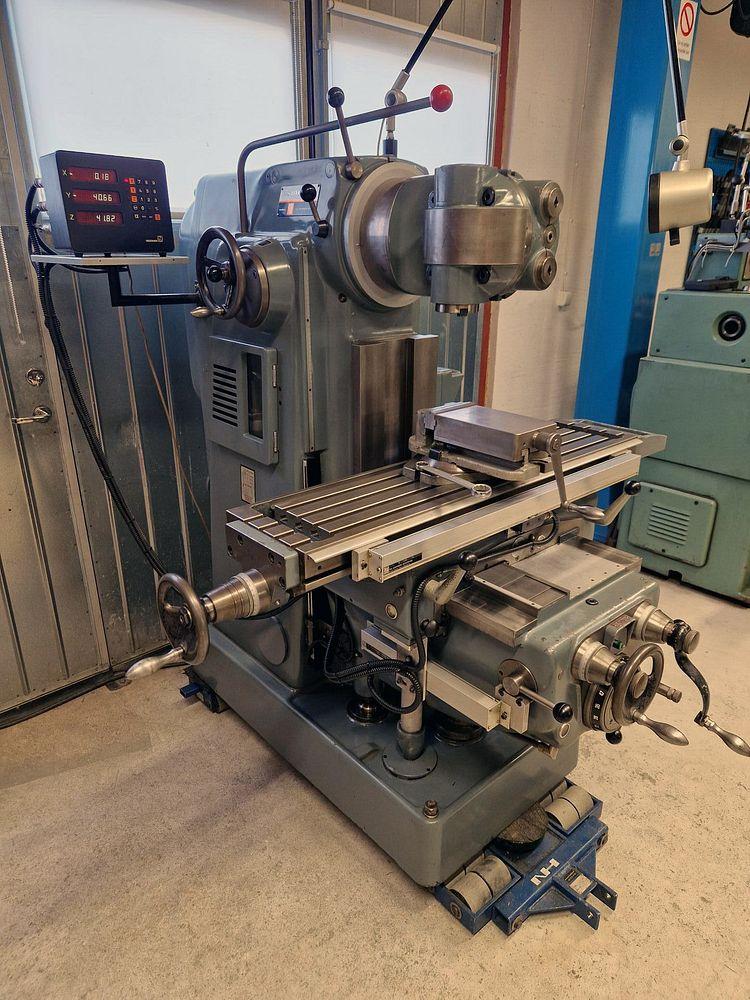Surplex GmbH, one of Europe’s leading industrial auction houses, presents the history behind the green lathes, milling machines, and drills of the mid-20th century. Discover why Reseda Green was chosen to reduce eye strain and improve workshop safety.
 The green lathes, milling, and drilling machines seem like relics from times gone by. These robust machines, often lacking CNC technology, are now rarely seen. From the 1950s to the 1980s, the so-called Reseda Green was one of the standard colors. Since green causes the least eye strain and helps prevent accidents in the workshop, Germany even had a standard, DIN 1844, until 1974, which specified Reseda Green as one of two machine colors. Even today, these green machines are cherished by collectors and connoisseurs.
The green lathes, milling, and drilling machines seem like relics from times gone by. These robust machines, often lacking CNC technology, are now rarely seen. From the 1950s to the 1980s, the so-called Reseda Green was one of the standard colors. Since green causes the least eye strain and helps prevent accidents in the workshop, Germany even had a standard, DIN 1844, until 1974, which specified Reseda Green as one of two machine colors. Even today, these green machines are cherished by collectors and connoisseurs.
Here and there, you can still find these old gems in workshops. Until the 1980s, the majority of lathes, milling, and drilling machines were green. But why was this the case? A significant reason is the effect that the color green inherently has. Green, a mix of advancing yellow and retreating blue, unites the contrasts and meanings of both colors: cold and warm, active and passive, emotion and rationality. This makes green calming and relaxing—perfect for a workshop.
Green strains the eyes less than other colors. This not only boosts work performance but also contributes to safety in the workshop. This is also evident in other areas: Operating theaters often use green because it does not glare under bright light and keeps the eyes alert. Similarly, school blackboards are often painted green for this reason. Additionally, there's another practical reason for the color in the workshop: Green makes dirt and oil less visible. The same applies to Blue-Gray, the other popular machine color of the last century.
Reseda Green: From Nature to Machine
The typical machine green is Reseda Green, also known as RAL 6011. Reseda is a genus of plants that includes Reseda odorata, or garden mignonette. The color of its leaves gave Reseda Green its name. Reseda Green is listed in the RAL color collection under number RAL 6011. The RAL system is a globally recognized color reference system introduced in Germany in 1927 to standardize and catalog colors. Each color group has its own number, and RAL 6011 belongs to the green tones, all starting with a 6. The RAL system includes 2,540 colors, with 216 shades in the RAL CLASSIC collection, including Reseda Green.
There Must Be Order: German DIN 1844 Standard for Machine Paint
In the post-war period, machines were increasingly painted in green and gray tones. The primary reason was the positive effect of the color on workers. RAL 6011 was officially defined as a machine paint in the German DIN 1844 standard to prevent accidents. In addition to Reseda Green, the classic Blue-Gray (RAL 7031) was specified in DIN 1843 as a possible base color for machines. Until 1974, machines in Germany had to be painted in these colors.
Germany, with its large machinery industry, influenced not only the domestic market but also manufacturers from other countries who adopted the color coding to make their machines compatible and marketable. The use of these colors, especially Reseda Green, was widespread from the 1950s to the 1970s and had a lasting impact.
From the Past to the Present
Even today, many industrial machines are painted in gray tones. While Reseda Green is no longer as common, you can still find old green gems in some workshops. These machines from previous generations, without modern CNC technology, are robust, rarely break down, and can still serve well for many decades. Refurbished lathes, milling, and drilling machines from the last century in Reseda Green, Blue-Gray, and their shades are highly sought after by collectors and experts.
However, the market is small and requires patience. It’s worth taking a look at the used machine market. Time and again, vintage workshop machines are taken out of production and sold. This is an opportunity for collectors and enthusiasts to acquire a machine from production for their own purposes. One of the platforms on which used machines—from old to new—are traded is the European industrial auction house Surplex.
For more information: www.surplex.com